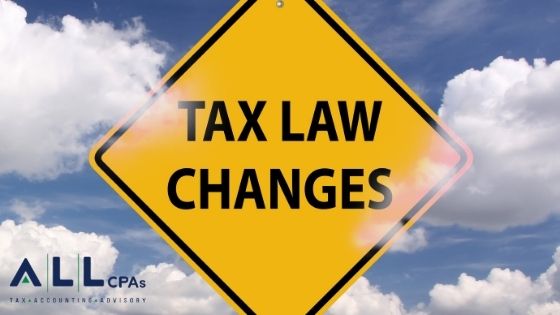
Small businesses use financial statements for many reasons. But knowing which one to use and what their limitations are can be confusing. But what are financial statements? Providing you with an overview of your company’s financial status, these statements show measurements of your company’s financial position, helping you make smarter business decisions. Let’s take a look at different types of financial statements and how they’re used by small businesses.
What Kinds of Financial Statements Do Small Businesses Use?
Financial statements come in three types: cash flow statements, income statements and balance sheets. We’ll discuss each of these below.
Cash Flow Statements
A cash flow statement shows you how your company makes and spends money, along with how it runs. These statements are usually over a full fiscal year. You’ll have four types: cash flow from your operations, cash flow from your investments, cash flow from your financing and total cash flow. The cash flow statement works for future opportunities by showing you when you tend to be high or low on cash, making it easier to plan for growth and avoid risk. These statements include cash-ins, when you raise capital, and cash-outs, when your dividends are paid, with the total showing the cash flow for the entire time period.
Income Statements
Also known as profit and loss statements, income statements show you how your company’s finances are performing over a particular time period. They track information such as expenses, revenue, gains and losses. Here are some terms you’ll need to understand:
- Gross Profits: This is what’s left once you’ve deducted the cost of goods sold (COGS) from the revenue you’ve earned. It includes direct labor, direct or raw materials and manufacturing overhead, but not indirect expenses.
- Net Profits: This is income after deducting all costs and expenses from revenue. Another way to look at it is gross profits minus debt, taxes and other business expenses. It’s also known as net income.
These calculations determine your company’s net income, basically showing your income plus gains minus your expenses plus losses. You’ll start by listing revenue, then expenses, then gains, then losses, to calculate your company’s net income.
Balance Sheets
A balance sheet shows prospective shareholders your company’s net worth by illustrating its financial position. It contains three accounts that come from the general ledger: assets, liabilities and equity. Let’s define these terms:
- Assets: Liquid assets are cash or assets that can be easily converted into cash (accounts receivable, inventory, cash and cash equivalents) and non-liquid assets that can’t be converted to cash quickly (equipment, buildings, real estate, intangible assets, patents and franchise agreements).
- Liabilities: Your liabilities are what you owe. Current liabilities are due within a year, such as accounts payable, interest, sales tax, utilities, wages and rent. Long-term liabilities are due over one year, such as deferred taxes, pension fund liabilities and long-term debt, including principal and interest on bonds.
- Equity: After liabilities are deducted from assets, shareholder equity is what remains. This can be distributed or kept in the business as retained earnings.
You’ll create a balance sheet with your company name, the phrase “Balance Sheet” and the date being calculated. You’ll put your assets in the upper left, listing all current assets with their total value, which you’ll follow with fixed assets and their total, calculating total assets at the bottom left of that section.
Liabilities are listed similarly, with all current liabilities and a total, followed by long-term liabilities and their total, adding the two totals together for your total liabilities.
Once these sections are totaled, you’ll list equity. When added to your liabilities, it should equal your assets.
6 Common Financial Statement Calculations
To calculate your company’s value, you can use six ratios or calculations:
- Working Capital Ratio divides assets by liabilities, but you must use the correct one from your balance sheet.
- Quick Ratio is determined by subtracting inventory from current liabilities, then divide that amount into liabilities.
- Earnings per Share (EPS) measures net income on common stock. Divide income by the weighted average number of outstanding common shares. Negative earnings won’t work with this ratio.
- Price-Earnings (P/E) assesses future earnings. After determining share price, you’ll divide that by the EPS to determine the ratio. Negative earnings won’t work with this ratio.
- Debt-Equity Ratio is calculated by adding outstanding long-term and short-term debt, then divide that total by the shareholder’s equity book value.
- Return on Equity (ROE) determines capital profitability by subtracting net earnings after taxes from preferred dividends, then divide this by the common equity dollars in your business.
How to Use Financial Statements in Business
Financial statements help you with both organization and opportunities:
- Investing: Financial statements are used by external investors, so they can see how you’ve allocated money and if your company is worth investing in.
- Loans: Financial statements show how your business handles money for financial institutions to decide whether to extend credit.
- Taxes: Financial statements make it easier to file and pay taxes by having information in a standardized form.
Financial statements provide important information on your company’s financial status, but it’s important to work with an accountant. If you have any questions about this please contact your ALL advisor or call us at 617-738-5200.
Recent Articles
Rising Construction Costs from COVID-19 Lead to New Bidding Approaches
Like other essential industries, t [...]
Nexus Requires Compliance and Begins by Filing Tax Returns
“Nexus” may sound like the name of [...]
The Impact You May See from the Build Back Better Act’s Tax Changes
The Build Back Better Act came und [...]




